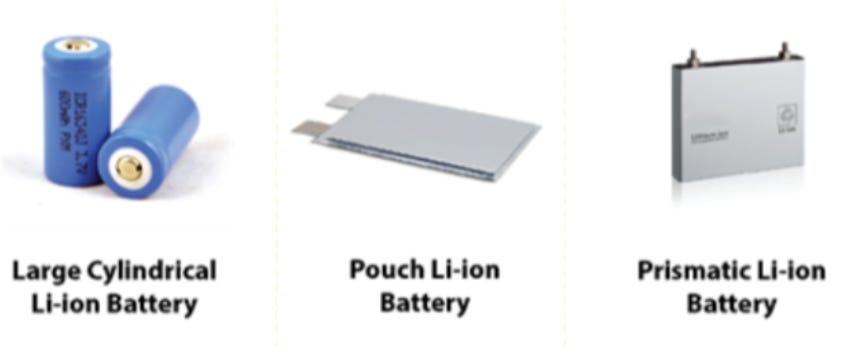Volkswagen made strategic announcements via a live-stream that seemed very reminiscent to Tesla. VW’s Power Day showcased The Company’s technology as it laid out a vision for the next decade. There were roughly three main takeaways that I believe showcase their differentiated approach towards becoming a prominent electric vehicle manufacturer.
Gigafactory Expansion
It is clear that Volkswagen sees the necessity of ramping up EV production, and they announced that they will build 6 40 GWh Gigafactories throughout Europe over the next 10 years. Retrofitting or reorganizing existing plants will not be enough to keep up with demand.
The company will also focus on incorporating a unified prismatic cell format in 80% of vehicles manufactured. The first factory is scheduled for completion in 2023, and VW will partner with Northvolt for initial cell supply.
Lower Cost Cell Chemistries
The prismatic cell format will use LFP (lithium iron phosphate) and high manganese content (LMnO) active materials at the cathode and Si-doped graphite at the anode. LFP will be used for entry-level models, while LMnO is projected to be used in future high volume production. LMnO uses roughly 75% manganese and the cell cost is approximately 50% cheaper than NMC. The lower cost is mainly due in part to manganese being ten times more abundant than nickel.
Steve Levine, a prominent science/tech writer, cited some potential partners that VW could work with in commercializing this chemistry.
NanoOne - makes LMnO materials and already has a joint R&D project with VW.
SVOLT - is working on an NMx cathode that is similar to NMC except it contains no cobalt.
BASF - is also working on a version of NMx.
Although the lower cost is appealing, the capacity differences of NMC811 (~200 mAh/g) and LMnO (~150 mAh/g) suggest that an LMnO battery will need to be about 33% larger to match the capacitive output.
Cell2Pack
Battery construction will be built into the design of the vehicle and serve as a structural component making the vehicle more efficient. Volkswagen will skip the step of incorporating the cells into modules, and instead engineer them directly into the pack.
This design will define the future as companies such as CATL and Tesla have also announced C2P plans. Tesla wants to incorporate 4680 cylindrical cells into the unified pack shown below.
CATL, a battery leader in China, unveiled its own Cell2Pack technology in 2019. The Company states improvements in mass energy density, volume utilization efficiency, and decrease in number of parts for battery packs.
We can imagine that Volkswagen’s C2P design will utilize some of these features to maximize efficiency.
Strategic Outlook
Volkswagen took a page out of Tesla’s book, and committed toward ramping up electric vehicle production and pushing the world to a sustainable future. They announced bold plans to pursue a prismatic cell format, which is much different that the pouch and cylindrical cells used in today’s vehicles. Tesla is well known for its use of 18650 and 21700 cylindrical cells, while companies such as GM and Nissan use pouch cells. Focusing on a cathode chemistry that has lower capacity will produce a less powerful battery, but a larger operating voltage window could enable faster charging/discharging. These are the kinds of properties that need to be weighed when choosing a battery chemistry. The average EV targets >300 miles in range, but in a world with a robust charging network is that long range really necessary?
If there is one legacy automobile company that can accept the challenge of converting to producing EVs, it is Volkswagen. VW leads the industry in car sales and has plenty of experience building combustion engine vehicles. The real question is whether they will be able to build Gigafactories fast enough. Tesla currently has three functioning factories with Gigafactories in Austin, TX and Berlin, Germany slated for completion in mid 2021. VW is making a strong push toward electrification, but their Gigafactory plans will not be optimized until the middle of the decade. Will they be able to avoid the hiccups and struggles that Tesla endured during its manufacturing scale-up?
References:









